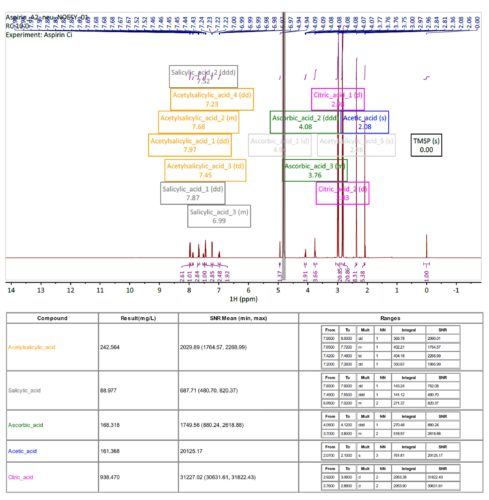
Targeted Mixture Analysis in Automation
The Mnova Gears SMA plugin processes NMR raw data in batches from a specified directory or in Real Time as they are produced by the spectrometer and produces nice and global reports with mixture components results.
This automated solution is excellent for QC environments where the same compounds and analytical conditions are repeated.
Optimize your workflow and run SMA analyses in automation. Your business will certainly appreciate it!
Help & Resources
Gears Mixtures Analysis (SMA)
Features
Analyze various mixtures at the same time and enjoy the huge flexibility in the workflow setup.
You can save all your experiments in the same library. SMA will retrieve the information about the mixture from the parameters table of each dataset and will quantify the sample’s components by applying the corresponding experiment.
With the Mgears viewer, you can visualize one by one the results of all your samples. Mixture compounds are displayed in a table with their calculated concentrations and colored according to the palette defined for the experiment.
Furthermore, individual results can be loaded into the Mnova SMA dialog, revised, and updated as required!
Related applications
Mixture analyses with Mnova
Mnova offers multiple ways to address the analyses of mixtures when presented in NMR spectra, whether they are targeted or untargeted, and whether they require component identification and/or quantification. The most suitable technique depends upon the application.
Discover which solution is best for your needs! And Contact us for more information.
Academic, Government & Industrial
Markets
Who should be using Mnova Gears Mixtures Analysis (SMA)?
- Foods, forensics, nutraceuticals, cosmetics, body fluids, impurity levels in fine, chemicals (including solvents), edible oils, wines and fortified alcoholic drinks, fruit juices.
- QC & production environments













